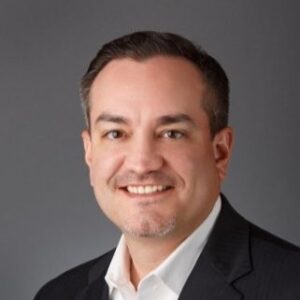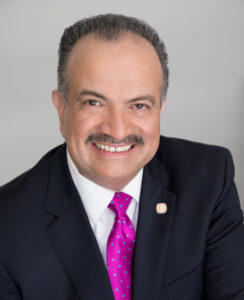
The FOW Panel Two: Student Focused Systems Change
Pam Sornson, JD
December 5, 2023
The four phases of economic growth are consistent: expansion, peak, contraction, and trough. The circumstances of the past few years — the pandemic, wars, social unrest, etc. — have driven many aspects of the global economy into a contracted state, if not a full-on trough. The bad news is that many people have suffered financial hardships caused by these realities. The good news is that there’s nowhere to go but up from where we find ourselves at now. Those evolutions in the world’s industrial complex have caused revolutions in how work gets — or will get — done. The schools and training programs needed to build the new workforce are in development now, and the people ‘in charge’ of their progress are collaborating on how it will go moving forward.
At least that’s the takeaway from the discussion presented by the second Panel of expert guests at the Future of Work conference (FOW) hosted by Pasadena City College’s (PCC) Economic and Workforce Development division (EWD) on October 26th (watch the replay here). These four industry specialists offered their vision of how today’s education systems can flex to better engage with each other to fill the workforce demands of the future.

Four Perspectives. One Primary Goal.
The overarching subject matter for the Panel focused on how to revise existing systems to maximize the student/ trainee’s experience and opportunity to achieve success. The individuals gathered to talk about their personal experiences and the aggregate wisdom those engendered, and how they use that knowledge to inform their current work within this arena.

From the Industry Perspective
Dennis Rodriguez, Director of Business Development for Black & Veatch, a global engineering firm, offers an ‘industry-based’ context. He notes that his firm actively engages with several elements of the workforce development (WFD) sector. They seek available, relevant funds from governments and then use those funds to partner with schools to design and build needed business-focused training programs. Obviously, the schools themselves are integral collaborators in the process.

From the Government Perspective
Kelly Mackey, State Director of Strategic Apprenticeships, CA Department of Industrial Relations, shared how California is going all-in with apprenticeships. Her newly formed agency incorporates an array of WFD services and supports that previously had operated as silos. Now, they’re working together towards common goals, including building DEI, equity, and social support into WFD initiatives. The State’s growing focus on ‘registered apprenticeships’ seeks to find paid work-based learning opportunities that connect those who need work with the businesses that need them. Adding a financial compensation aspect to the arrangement allows students to maintain their lives while learning; the companies get the assurance that their next ‘hire’ will be appropriately trained to do the job.

From the Worker Perspective
Nicole Feenstra, founder of the marketing entity ‘The DNA Agency,’ brings a unique thought to the chat: why aren’t we marketing jobs to learners and workers to businesses? In many instances, those looking for work don’t know how to find it, while those who need workers can’t seem to locate them. This communication disconnect cements the divide between potential employers and employees, exacerbating the economic challenges of unemployment rates and unfilled job openings.
Instead, she suggests, companies should consider modifying their methods to attract potential workers. Her research shows that typical ‘job search’ messaging can’t compete for attention against the panoply of digital distractions constantly streaming through electronic devices. Advertising jobs today mandates using similar tags and enticements as those that attract millions of viewers to cute cat videos.
But that’s not all that’s needed, Feenstra says. Gaining attention is simply step #1. Step #2 is giving viewers follow-up options that actually move them to take action. And all of these activities should be coordinated across the EWD and WFD spectrum.

Chancellor-Rodriguez-8×10-300dpi
From the Education Perspective
Dr. Francisco Rodriguez, Chancellor of the Los Angeles Community College District, shared two fundamental aspects that characterize the work being done by his ‘agency,’ the nine LA-based community colleges.
-
- They are focused on collaboration with educational, industrial, and governmental partners. With constant outreach to other schools, State, regional, and local government agencies, and business and industry leaders, the schools are forming partnerships that will together build the region’s new economic foundation.
- They are ‘tuning up’ their internal operations to reflect their external goals and initiatives. Dr. Rodriguez sees the District as a role model for organizations of any type. They intentionally seek out DEI and multicultural hires to expand their leadership perspectives. They’re adding new courses and programs related directly to the needs of their business partners. And the District is actively engaged with the Legislature to ensure that policy, funding, and actions all coalesce around these WFD principles.

WFD & Emerging Trends
Collectively, the Panel also discussed how emerging trends are affecting their decisions and practices.
Artificial Intelligence (AI) is already encroaching on all of their sectors.
Current and future workers will need proficiency in these technical skills, so the schools and the government are developing responsive training programs to provide that option.
Businesses must compete with the software phenomenon, too, so they’re also reimagining their operations using an AI lens.
AI doesn’t replace ‘soft skills,’ however, according to the Black & Veatch representative. Even with all the promise shown by the technology, its value will only be as good as the humans who develop and implement it.
Global competitiveness is also spurring innovation, instigating conversations about what needs to be done to compete in that realm effectively and how to best pursue support and enhancements for those projects. The panelists confirmed:
Dedicated government funding will ensure training programs are both relevant and sufficient to restructure the economic foundation.
Local and regional resources are vast and deep. Both the educational and industry leaders on the Panel agreed that further exploration and development at the local level will retain economic resources in those areas while also strengthening the outcome for the State as a whole.
Improving the messaging among WFD participants from all segments will encourage communication, outreach, and connections that will result in enhanced economic activity.
It’s clear that Los Angeles, LA County, and the State of California are all in the midst of significant economic and social upheavals, some in the form of industrial contractions, others definitely in the throes of economic troughs. It will take a village to remediate all these situations, and the conversation presented by the Panelists at PCC’s FOW Conference was informative for all who attended. It offered insights and action items for anyone who is invested in furthering their local, regional, and state economies.


